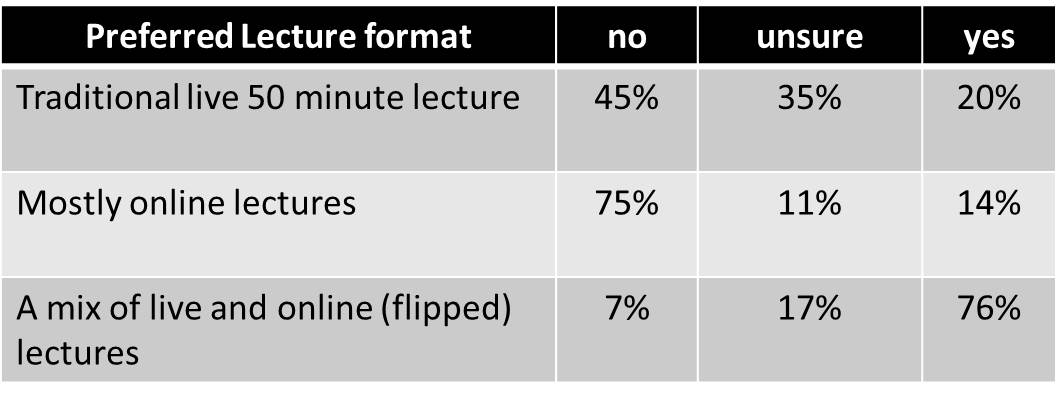


Theme
3BB The lecture and the flipped classroom
INSTITUTION
UNIVERSITY OF GLASGOW - United Kingdom
Despite the rise in student-centred approaches to teaching and learning, the lecture remains the stalwart of teaching in medical education (Brown and Manogue, 2001). One approach to improving engagement and active student involvement is the ‘flipped lecture’ format. The ‘flipped lecture’ centres on the delivery of on-line teaching material prior to a ‘live’ session where students can participate by (i) determining the content and (ii) interacting through activities such as quizzes, problems or case-based scenarios (Sharma et al, 2015).
90% of the student cohort responded to an evaluation survey and 10 students participated in a focus group.
- Most students watched the online component once (65%), at home (63%).
- Students welcomed the ‘flipped lecture’ as part of a varied approach to teaching delivery

“Good lecturing style, good video. All in all a refreshing approach to teaching”
- 76% of students responded that they would like a mix of online and face-to-face lectures


The ‘flipped lecture’ format has a positive effect on student engagement.
It assists with the development of active learning skills and encourages a deeper understanding of the subject.
The inclusion of ‘flipped lectures’ needs careful consideration, however, as it represents an increase in time commitments for students.
The ‘flipped lecture’ format is a useful tool in the portfolio of teaching methods.
It requires a significant time investment from students and teachers, and is best used as one of a repertoire of teaching styles.
The ‘flipped lecture’ format may be best reserved for complex topics.
Brown G. and Manogue, M. 2001. AMEE Medical Education Guide No. 22: Refreshing lecturing: a guide for lecturers. Medical Teacher 23:3, 231-244
Sharma N, Lau CS, Doherty I, Harbutt, D. 2015. How we flipped the medical classroom. Medical Teacher 37:4, 327-330
We would like to thank Dr Aileen Linn, E-Learning Development Officer, for technological assistance and creative input for the embedded video.

 Send Email
Send Email